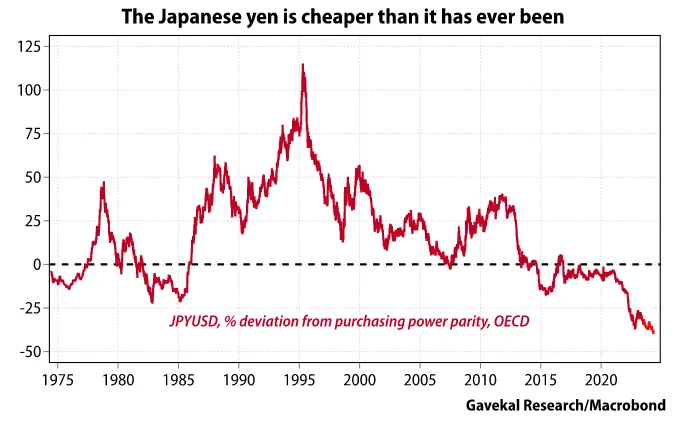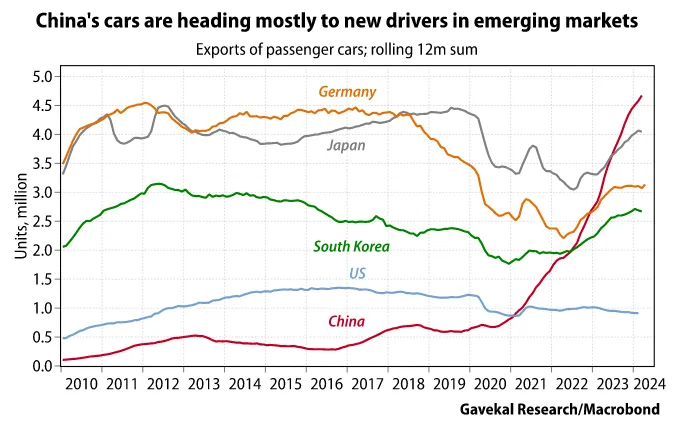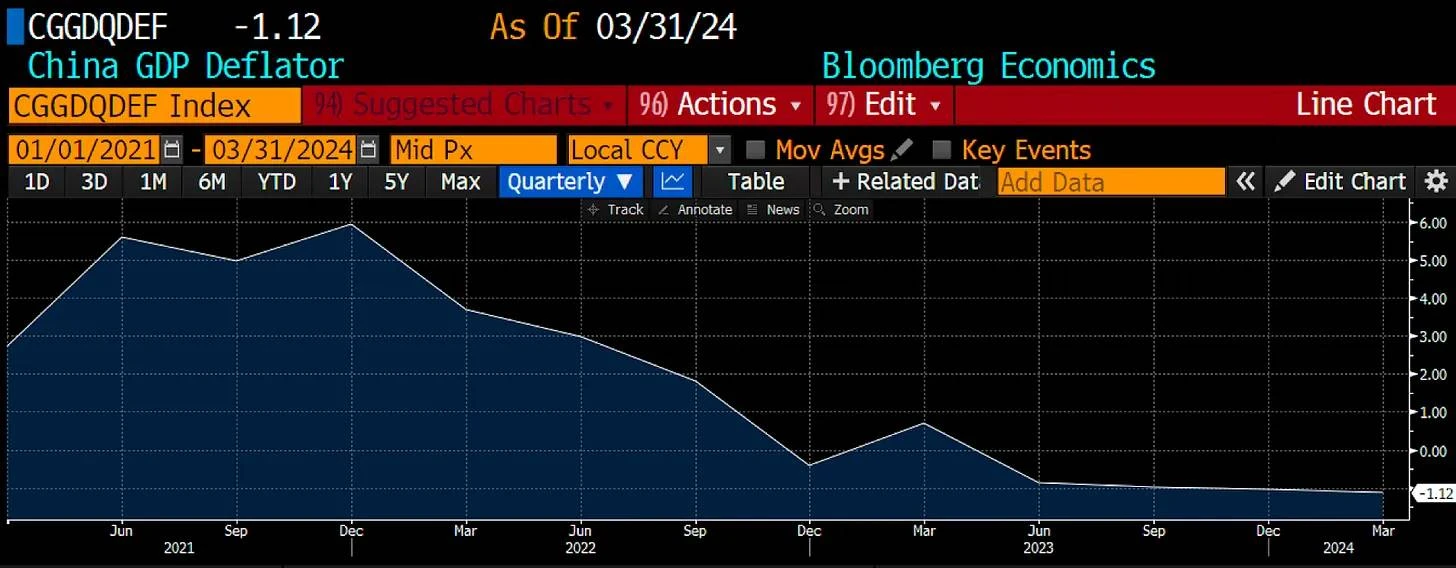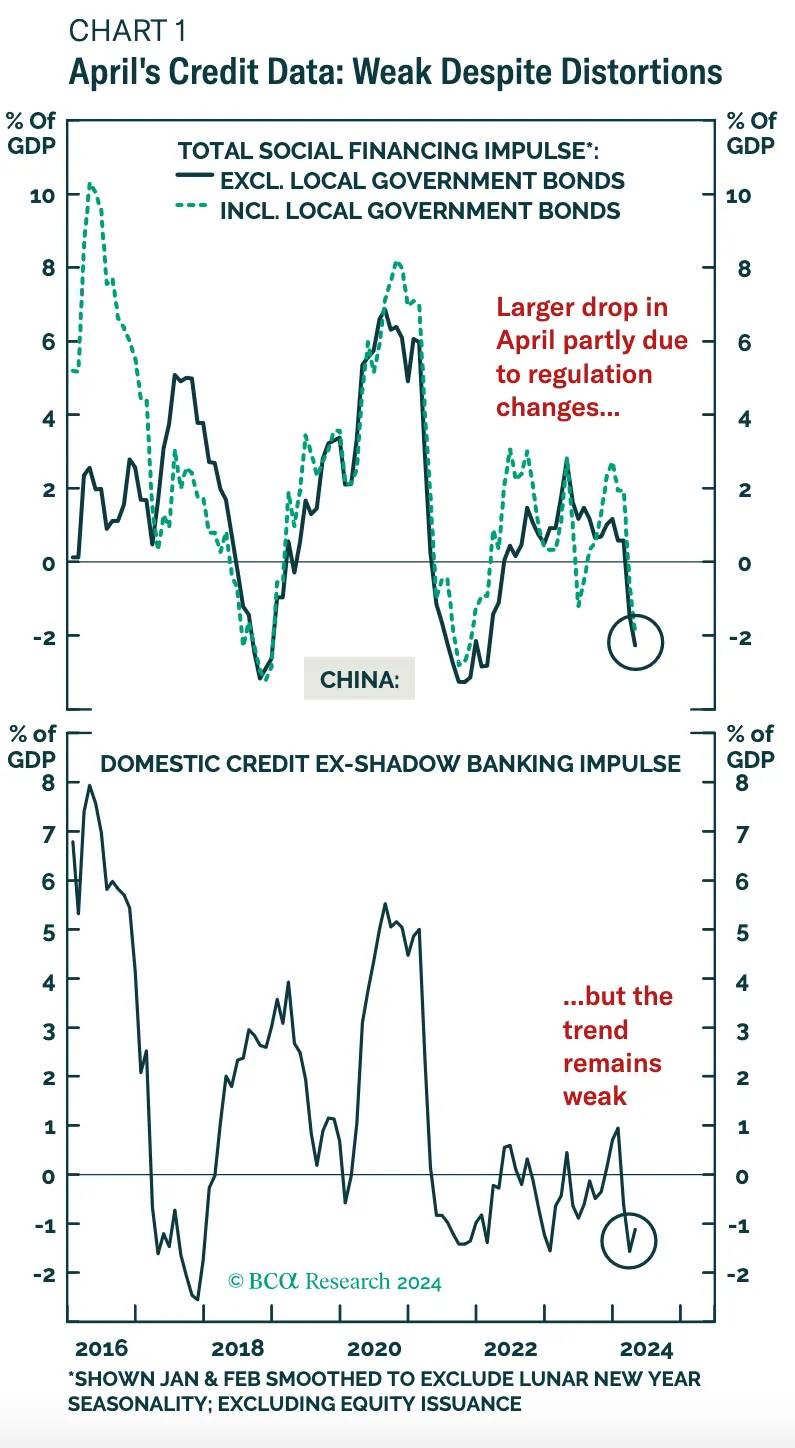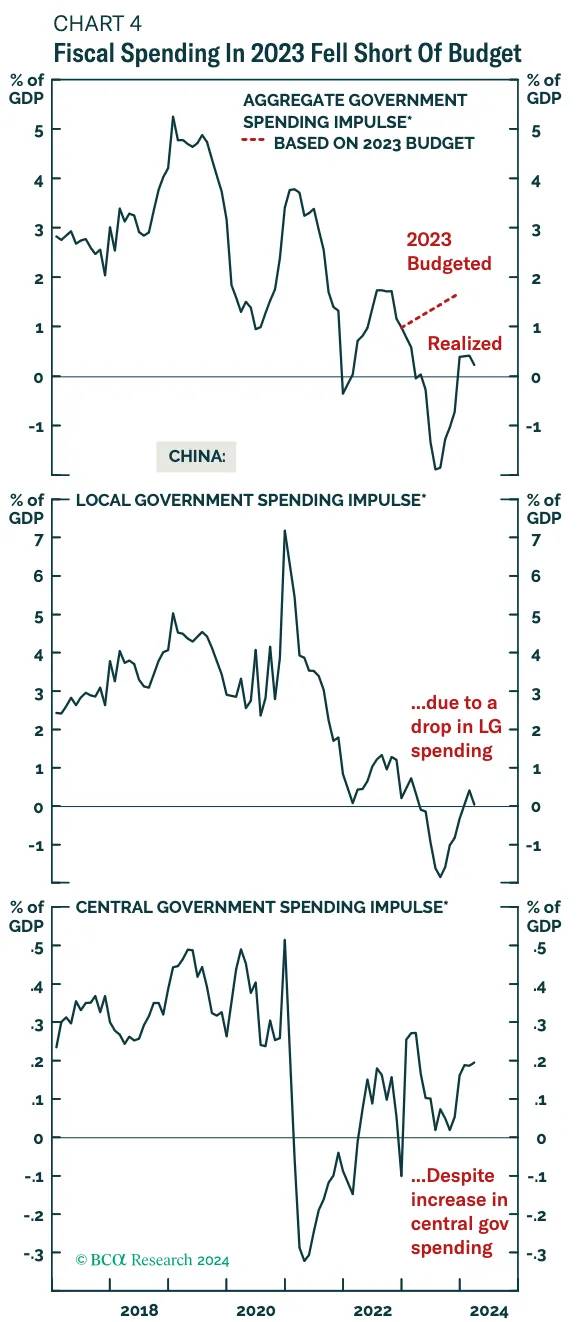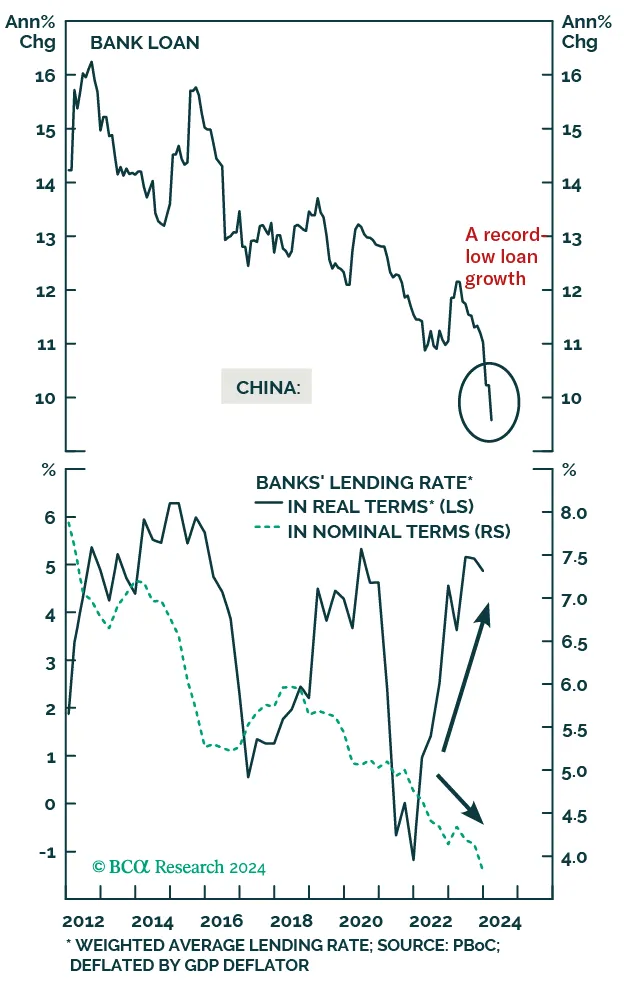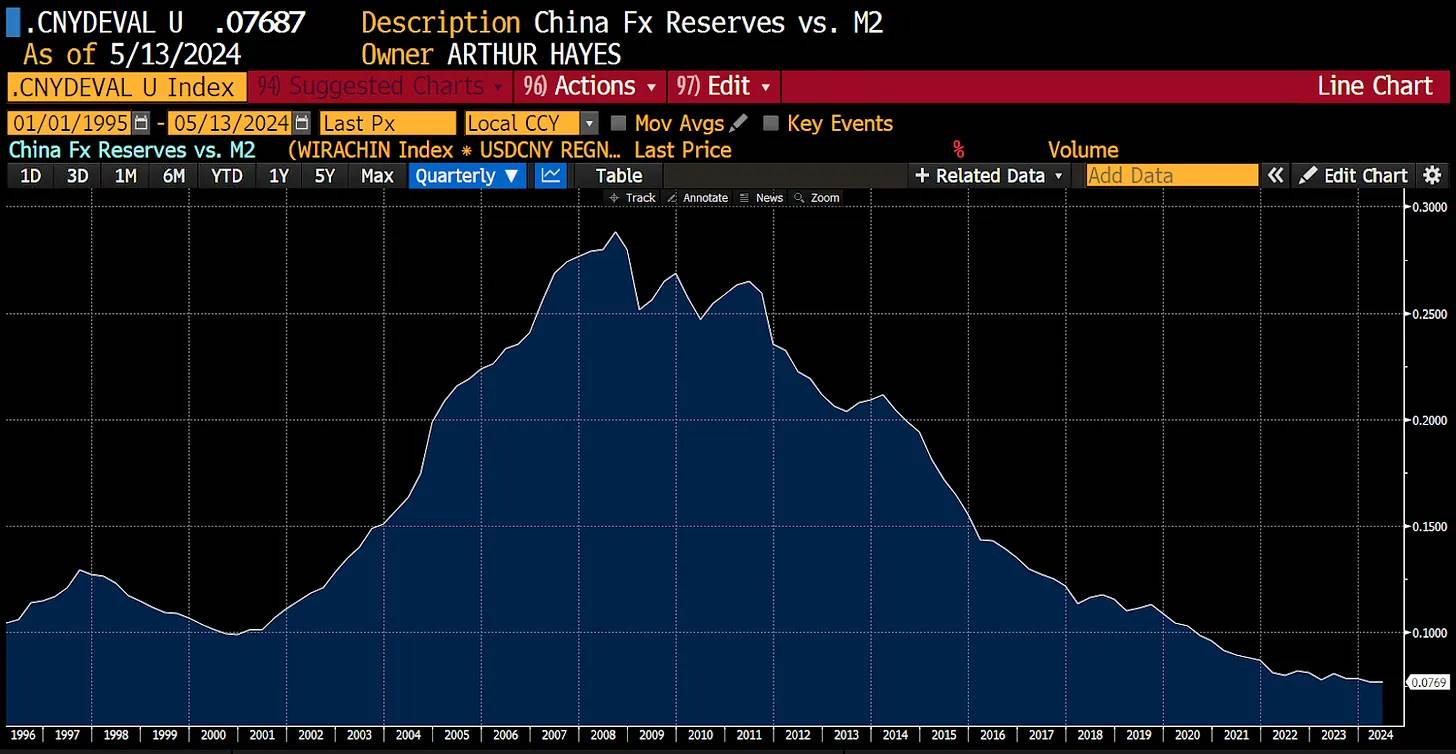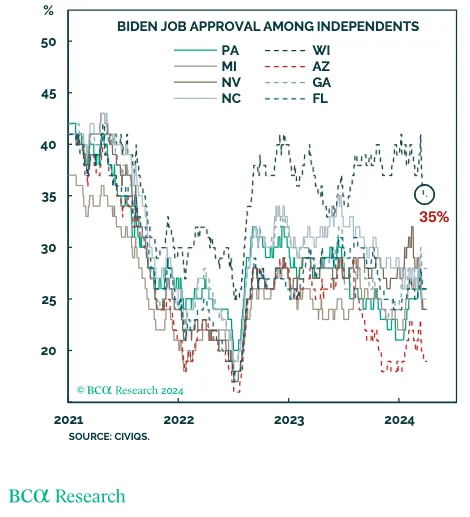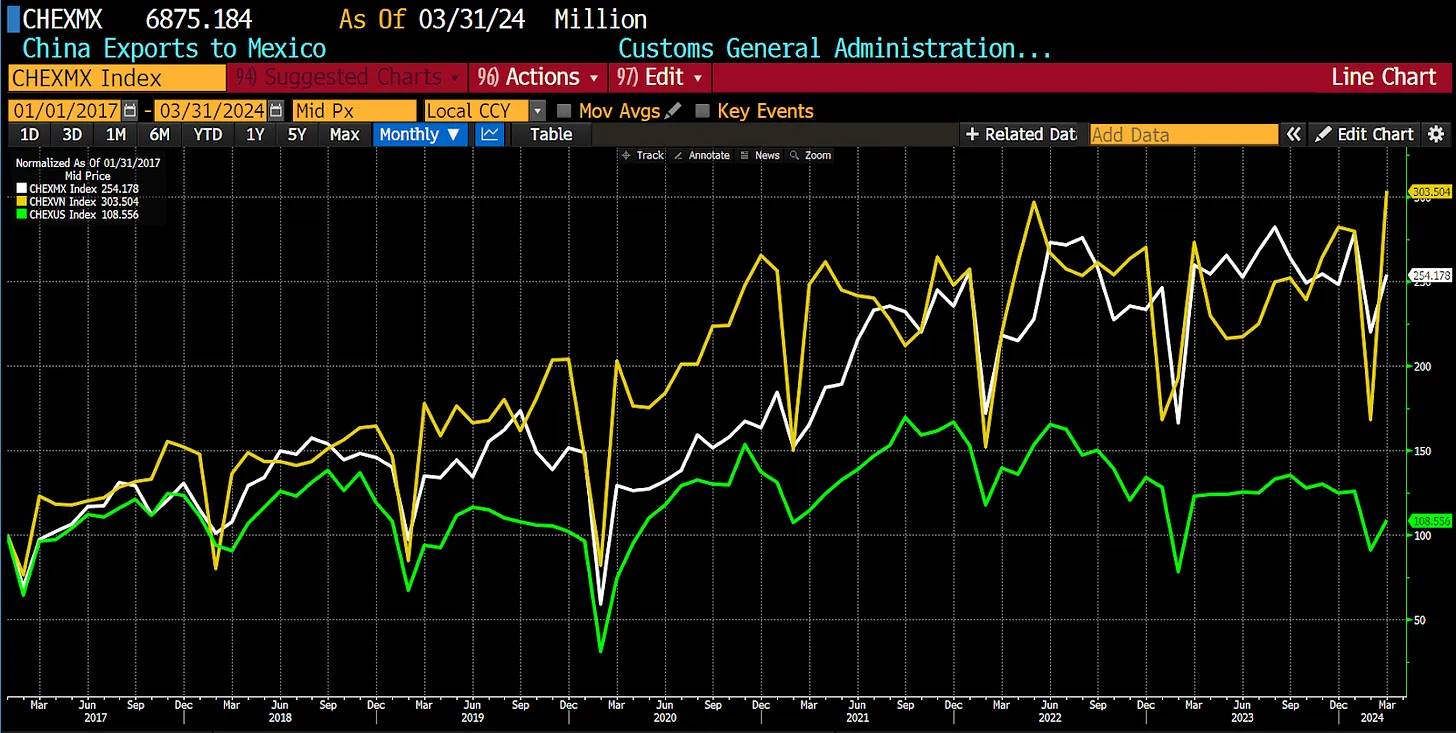Arthur Hayes: Çin, ABD ve Japonya arasındaki para politikası oyunu kripto paraların başlat düğmesine basıyor
Orijinal yazar: Arthur Hayes
Orijinal çeviri: TechFlow
Introduction: Arthur deeply analyzes how the global elite use policy tools to maintain the status quo, even though these tools will bring pain now or in the future. His core point is that the exchange rate between the US dollar and the Japanese yen is one of the most important global economic variables, and explores the complex monetary policy interactions between Japan, the United States and China and their far-reaching impact on the global economy.
The global elites have a variety of policy tools to maintain the status quo that will cause pain now or in the future. I am skeptical and believe that the only goal of elected and unelected bureaucrats is to stay in power. Therefore, the easy button is always pressed first. The hard choices and strong measures are best left to the next government.
It would take a very long series of articles to fully explain why the USD/JPY exchange rate is the most important global economic variable. This is my third attempt to describe the chain of events that led us to crypto heaven. Rather than providing a complete and comprehensive picture, I will start by giving readers the easy button, as they do. If policymakers abandon the use of this tool, then I know that corrective actions will be longer, more difficult, and more drawn out. At that point, I can provide you with a more complete explanation of the sequence of monetary events and the relevant historical perspective.
The real “oh, they are screwed” moment came when I read two recent Solid Ground newsletters written by Russell Napier, which describe the dilemmas faced by the monetary elites who run peacetime Japan and the United States. The most recent, published on May 12, describes the easy buttons available to the Bank of Japan (BOJ), the Federal Reserve (Fed), and the U.S. Treasury.
Very simply, the Federal Reserve, under the direction of the Treasury Department, can legally exchange unlimited amounts of dollars and yen with the Bank of Japan, at any time and at any place. The Bank of Japan and the Ministry of Finance (MOF) of Japan can use these dollars to manipulate the exchange rate by buying yen. By strengthening the yen in this way, the following situations are avoided:
-
The Bank of Japan raises interest rates, in the process forcing regulated pools of money such as banks, insurance companies and pension funds to buy Japanese government bonds (JGBs) at high prices and low yields.
-
In order to buy these high-priced Japanese government bonds, these pools had to sell their US Treasury bonds (UST) to raise US dollars to buy yen and repatriate them.
-
The Japanese Ministry of Finance sells U.S. Treasuries to raise dollars to buy yen.
If Japanese companies, the largest holders of US Treasuries, do not become forced sellers, this helps the US Treasury continue to finance the profligate federal government at negative real rates. Otherwise, the Treasury will have to initiate yield curve control (YCC). This is the ultimate destination, but it must be postponed as long as possible because of the obvious inflationary and possible hyperinflationary effects.
Seppuku
Who is the largest holder of Japanese government bonds? The Bank of Japan.
Who is in charge of monetary policy in Japan? The Bank of Japan.
What happens to bonds when interest rates rise? Their prices fall.
Who has the most to lose if interest rates rise? The Bank of Japan.
The Bank of Japan would be committing seppuku if it raised interest rates. Given its strong self-preservation instinct, the institution will not raise rates unless there is a solution to spread the losses among other financial players.
If the Bank of Japan does not raise interest rates and the Fed does not cut interest rates, the interest rate differential between the US dollar and the yen will still exist. Because the yield on the US dollar is higher than that on the yen, investors will continue to sell the yen.
China is not happy
China and Japan are direct export competitors. In many industries, the quality of Chinese goods is comparable to that of Japanese goods. Therefore, the only thing that matters is price. If the RMB/JPY exchange rate rises (weaker yen against stronger RMB), Chinas export competitiveness will suffer.
China is not going to like this RMB/JPY exchange rate chart.
China hopes to escape deflation by manufacturing and exporting more goods.
Real estate = bad
Manufacturing = good
Thats where cheap bank credit will flow.
As you can see, China and Japan are neck and neck in the emerging passenger car export market. I use this as an example of global export competition. This is the most important export market given the number of cars purchased each year. In addition, the countries of the Global South are young and growing, and their number of cars per capita will increase in the coming years.
If the yen continues to depreciate, China will respond by devaluing its currency.
The People’s Bank of China (PBOC) has essentially pegged the yuan to the dollar since 1994, with a slight tendency to strengthen. That’s what this USDCNY chart shows. That’s about to change.
China must devalue the RMB implicitly by creating more RMB credit onshore, and explicitly by a higher USDCNY value, so that exports outprice Japan. China must do this to counter the deflationary collapse caused by the bursting of the real estate bubble.
The GDP deflator converts nominal GDP into real GDP. A negative number means prices are falling, which is not a good thing for a debt-based economy. Because banks extend credit with asset collateral, when asset prices fall, debt repayment becomes a problem and their prices also fall. This is fatal, and is why China and every other global economy needs inflation to function.
It is easy to create the needed inflation; just print more money. However, China’s money printing press is not running at full capacity. Credit, as always, is created by the commercial banking system.
These BCA research charts clearly show a negative credit pulse, which indicates insufficient credit money creation.
Spending by local and central governments will also not be enough to end deflation.
The real interest rate is positive. The growth in the quantity of money is falling, but its price is rising. Very bad.
China has to create more credit, either through government spending or lending to businesses. So far, China has refrained from launching major stimulus programs like they did in 2009 and 2015. I think this is because there are well-founded concerns that these domestic money creation policies will have a negative impact on the exchange rate, which, at least for now, they want to keep stable against the dollar.
To create the above chart, I divided China’s M2 (RMB money supply) by reported foreign exchange reserves. At its peak in 2008, the RMB was backed by 30% of foreign exchange reserves, mostly made up of US Treasuries and other dollar assets. Currently, the RMB is backed by just 8% of foreign exchange reserves, the lowest level since data became available.
If China increases credit creation, the money supply will increase further. This increases the pressure for a dirty float of the RMB against the dollar. I think China wants to keep the dollar-RMB stable for domestic and foreign political reasons.
Domestically, China does not want to exacerbate capital flight by massively devaluing the yuan. Moreover, this increases the cost of imports. China imports food and energy. When these costs rise too fast, social unrest is not far away. The lesson that any Marxist, especially a Chinese Marxist, draws from revolutionary history is that food and energy inflation must not be allowed to get out of control.
The key factor of concern to China is the peacetime American response to a devaluation of the renminbi. I will discuss this in more detail later, but a devaluation of the renminbi makes Chinese goods cheaper, reducing the incentive for American factories to relocate. Why would they build expensive factories and hire expensive skilled workers (if they can find them) when their final product still cannot compete on price with Chinese goods? Unless the US government provides corporate welfare on a massive scale, American manufacturing companies will continue to make their products abroad.
Rust Zone
Biden is hurt in states that have lost their manufacturing base over the past 30 years. If China devalues its currency, jobs will continue to be lost. If Biden doesnt win these states, he loses the election. Trumps victory in 2016 came marginally from winning in these China-averse Rust Belt states.
Some readers might think Biden’s aides have finally figured it out; anti-China rhetoric and actions are coming more frequently from the Biden administration. In fact, Biden just announced another increase in tariffs on Chinese-origin goods, such as electric vehicles.
My counterargument is that Chinese goods dont always come directly from China. If the product is cheap enough, China will export it to a US-friendly country first before it ends up in the US. Then, the goods are considered to be from another country, not China.
Here is a chart of Chinese exports to Mexico (white), Vietnam (yellow), and the United States (green). Trumps term began in 2017, which is the starting date for the index, with a value of 100. Chinas trade with Mexico increased by 154% and with Vietnam by 203%, but trade with the United States increased by only 8%. Obviously, the value of trade with the United States is much higher than that of Mexico and Vietnam, but it is clear that China is using these two countries as transit points for goods to enter the United States through its border.
If the goods are high quality and low priced, they will come to the United States. While politicians will make a big fuss about imposing punitive tariffs on dumped goods, China can easily switch export destinations. Countries like Vietnam and Mexico are happy to earn a small commission by allowing goods to pass through their borders into the United States.
Biden must win these battleground states to stop Trump. Biden cannot afford a devaluation of the yuan before the election. China will use this fear of electoral defeat to further its own ends.
China Threat
Secretary of State Blinken and Treasury Secretary Yellen have visited Beijing several times over the past few quarters, and I imagine the real core of the conversations revolved around the threat from China.
If the US does not let Japan strengthen the yen, China will respond by devaluing the yuan against the dollar and exporting its deflation to the world. Deflation is exported through mass-produced cheap goods.
China is also pressuring Yellen to pursue a weak dollar policy, increasing the global supply of dollars by any means necessary. This allows China to once again engage in heavy stimulus, because on a relative basis, the pace of RMB credit creation will match that of the dollar.
In return, China would keep the dollar-yuan exchange rate stable. The yuan would not depreciate against the dollar. Perhaps China would even agree to limit the amount of products it exports to the United States to help American companies reshore production.
If Yellen and Blinken balk at this threat, I would raise the nuclear currency option.
It is estimated that China hoards over 31,000 tons of gold. This is the government and private holdings combined. The Party actually owns everything in China, so I added the government and private holdings together. At today’s prices, this gold is worth about $2.34 trillion. The RMB is implicitly backed by 6% gold. I divided China’s reported RMB money supply by the value of all the gold in China.
As mentioned earlier, Chinas FX reserves/M2 ratio is 8%. The RMB is backed by the US dollar and gold in roughly equal proportions.
My threat would be to announce the floating of the RMB against gold. China could achieve this outcome by:
-
Exchange US Treasuries for gold as quickly as possible. At some point, the US may freeze Chinese assets or restrict Chinas ability to sell its approximately $1 trillion in US Treasuries. But I believe China can quickly sell a few hundred billion dollars of US Treasuries at fire sale prices before US politicians react.
-
Instruct any state-owned enterprises that hold U.S. stocks or U.S. Treasuries to also sell and buy gold.
-
Announce that the RMB will be pegged to gold at a devaluation of 20% to 30% from current levels. The price of gold in RMB will rise (XAUCNY rises).
-
Gold is trading at a premium to the LBMA fixing on the Shanghai Futures Exchange (SFE). This leads traders to arbitrage by taking delivery of gold in London via long futures contracts and in Shanghai via short futures contracts. This moves gold from the West to the East.
-
As global gold prices rise and physical gold stocks in LBMA member warehouses decrease, one or more major Western financial institutions go bankrupt due to lack of physical gold. It is rumored that Western financial institutions are naked shorting gold in the paper derivatives market. This would be an upgraded version of GameStop because it could cause the entire Western financial system to collapse due to the crazy leverage embedded in the system.
-
The Fed was forced to print money to save the banking system, increasing the supply of dollars. This helped strengthen the yuan against the dollar.
After reading these hypothetical scenarios, the reader may wonder why I think the United States can influence Japans monetary policy. The key assumption is that by threatening the United States, China can convince the United States to instruct Japan to strengthen the yen.
In the 1970s and 1980s, Japan frequently agreed to strengthen the yen in order to reduce the competitiveness of its exports relative to the United States and Western Europe (primarily Germany).
The above chart is the trend of USD/JPY. In the early 1970s, USD/JPY was 350. Imagine how cheap Japanese yen goods were to Americans in the midst of inflation.
Yellen is well positioned to politely advise Japanese companies to strengthen the yen this time around to prevent Chinese retaliation.
What would they do if Japan cooperated? Let me explain why Japan cannot strengthen the yen by instructing the Bank of Japan to raise interest rates and end its quantitative easing policy.
Japanese Debt Math
I want to quickly explain why if the Bank of Japan raises interest rates, they’ll melt faster than Sam Bankman-Fried on the witness stand.
The Bank of Japan owns over 50% of all outstanding JGBs. They essentially fix the price of bonds that are 10 years or shorter. What they really care about is the rate on 10-year JGBs, as that is the reference rate for many fixed income products (corporate loans, mortgages, etc.). Lets assume their entire portfolio consists of 10-year JGBs.
Currently, the latest 10-year JGB #374 is priced at 98.682 and yields 0.954%. Assume that the Bank of Japan raises its policy rate to match the current 10-year US Treasury yield of 4.48%. At this point the JGB is priced at 70.951, or a 28% drop (I used Bloombergs bond pricing feature). Assuming the Bank of Japan has 585.2 trillion yen in bonds and the USD/JPY exchange rate is 156, this is a $1.05 trillion market value loss.
Losing that much money would be a deadly fraud by the Bank of Japan against yen holders. The Bank of Japan holds only $32.25 billion in equity capital. Even extreme traders in cryptocurrencies dont trade as highly leveraged as the Bank of Japan. Seeing these losses, what would you do if you held yen or yen-denominated assets? Sell or hedge. In any case, USD/JPY would quickly rise to over 200, faster than Su Zhu and Kyle Davis could escape the liquidators appointed by the British Virgin Islands court.
If the BoJ really had to raise rates to narrow the USD/JPY differential, they would first force domestic regulated pools of money (banks, insurance companies, and pension funds) to buy JGBs. To do this, these entities would sell their foreign exchange dollar assets, primarily US Treasuries and US stocks, use those dollars to buy yen, and then buy the BoJs negative real yielding high-priced JGBs.
From an accounting perspective, as long as these institutions hold them to maturity, they will not mark-to-market their JGB portfolios and report large losses. However, their clients, the people whose money they manage, will be financially pressured to save the BOJ.
This is a bad outcome from a peacetime American perspective, as the Japanese private sector will be selling trillions of dollars in U.S. Treasuries and U.S. stocks.
Whatever solution Yellen suggests for strengthening the yen, it does not require the Bank of Japan to raise interest rates.
Easy Button
As mentioned above, there is a way to weaken the dollar, allow China to re-stimulate its economy, and strengthen the yen without having to sell U.S. Treasuries. I will discuss how this problem can be solved through unlimited USD/JPY currency swaps.
To weaken the dollar, its supply must be increased. Imagine that Japan needs $1 trillion of firepower to strengthen the yen from 156 to 100 overnight. The Fed exchanges $1 trillion for an equal amount of yen. The Fed prints dollars and the Bank of Japan prints yen. This costs nothing to each central bank because they have their own domestic money printing presses.
These dollars exit the Bank of Japans balance sheet because the Japanese Ministry of Finance must buy yen on the open market. The Fed has no use for the yen, so it stays on the Feds balance sheet. When a currency is created but remains on a central banks balance sheet, it has been sterilized. The Fed sterilized the yen, but the Bank of Japan released $1 trillion into global money markets. As a result, the dollar depreciated against all other currencies because its supply increased.
As the dollar depreciates, China can create more onshore RMB credit to counter the adverse effects of deflation. If China wants to keep the USD/CNY exchange rate at 7.22, it can create an additional RMB 7.22 trillion ($1 trillion * 7.22 USD/CNY) of domestic credit.
The RMB has fallen against the yen, which is a depreciation for China and an appreciation from Japans perspective. The global supply of RMB has increased, while the Japanese Ministry of Finance has reduced the supply of yen as it uses dollars to buy yen. The yen is now fairly priced against the RMB on a purchasing power parity basis.
Any asset denominated in dollars goes up in price. Thats good for U.S. stocks and the U.S. government because it collects capital gains taxes on profits. Its good for Japanese companies because they collectively have over $3 trillion in dollar assets. Cryptocurrencies soar because theres more dollar and yuan liquidity in the system.
Domestic inflation in Japan fell as the cost of imported energy fell due to the stronger yen. However, exports will suffer due to the stronger currency.
Everyone gains, some more than others, but it helps keep the global dollar system intact ahead of the U.S. presidential election. No country needs to make painful choices that negatively affect its domestic political standing.
To understand the risks of the U.S. engaging in such behavior, first I need to draw the equation between yield curve control (YCC) and this USD/JPY swap scam.
Same but different
What is YCC?
This occurs when a central bank is willing to print unlimited amounts of money to buy bonds in order to fix prices and yields at politically appropriate levels. Due to YCC, the money supply increases, causing the currency to depreciate.
What is the USD/JPY swap arrangement?
The Fed is ready to print unlimited dollars so that the Bank of Japan can delay raising interest rates and thus avoid selling US Treasuries.
The result of both policies is the same; namely, US Treasury yields are lower than they would otherwise be. In addition, the dollar will depreciate as supply increases.
The swap line is better politically because it happens in the dark. Most commoners and even nobles don’t understand how these instruments work or where they sit on the Fed’s balance sheet. It also doesn’t require consultation with the U.S. Congress because the Fed acquired those powers decades ago.
The YCC is more visible and is sure to provoke a fierce backlash from concerned and angry citizens.
risk
The risk is that the dollar depreciates too much. Once the market equates the USD/JPY swap line with YCC, the dollar will rapidly depreciate to the bottom of the sea. When the swap is unwound, it will mean the end of the dollar reserve system.
Given that it will take many years for the market to force such an unwinding, politicians who are concerned about support today will support the expansion of the USDJPY swap line.
Pay attention
How do you monitor whether I am right or wrong?
Watch the USD/JPY exchange rate more closely than Solana developers monitor uptime. In fact, watch it more closely…
The USD/JPY differential problem has not been solved. Therefore, the yen will continue to weaken regardless of intervention. After each intervention, open this web page and monitor the size of the USD/JPY swap line. On Bloomberg, monitor the FESLTOTL index. If it starts to increase significantly, and I mean in billions of dollars, then you know that this is the path chosen by the elites.
At this point, add the size of the USD swap line to your USD liquidity index. Sit back and watch crypto prices rise in fiat terms.
mistake
I may be going about this the wrong way in two ways.
-
The Bank of Japan changed its weak yen policy by raising interest rates significantly and said it would continue. By significantly, I mean 2% or more. A mere 0.25% increase in rates will not cut the 5.4% interest rate differential between the dollar and the yen.
-
The yen continues to weaken, and the U.S. and Japan do nothing about it. China retaliates by devaluing the yuan against the dollar or pegging it to gold.
If any of the above happens, it will eventually lead to some form of YCC in the US, but the path to YCC is complicated. I have a theory about the sequence of events from here to there, and if necessary I will publish a series of posts about that journey.
Timing is key
The market knows that the yen is too weak. I believe the pace of yen depreciation will accelerate in the fall. This will put pressure on the United States, Japan, and China to take action. The US election is a key driver for the Biden administration to come up with a solution.
I think the surge to 200 in USD/JPY was enough to get the Chemical Brothers to play “Push the Button.”
This is a simplified version of why all crypto traders must always monitor USD/JPY. I believe the clown brigade running peacetime America will choose the easy way out. It is simply the politically sound choice.
If my theory comes true, any institutional investor can easily buy a US-listed Bitcoin ETF. Bitcoin is the best performing asset in the face of global fiat currency devaluation, and they know it. When dealing with the problem of a weak yen, I will do the math to estimate how the funds flowing into the Bitcoin complex can push the price to $1 million or even higher. Keep your imagination, stay optimistic, this is not the time to be a coward.
This article is sourced from the internet: Arthur Hayes: The monetary policy game between China, the United States and Japan presses the start button of the crypto bull market
Related: Solana (SOL) Breaching $150 Could Change SOL’s Course
In Brief Solana’s price is currently in a descending wedge, and investors are anticipating a breakout. Price indicators suggest SOL’s bullish momentum could persist over the next few trading sessions. The P/S ratio highlights that despite the growth in revenue, SOL is still highly undervalued. Solana’s (SOL) price is on the brink of breaking out of a bullish reversal pattern that could send the altcoin into a recovery rally. This is only possible if the broader market cues keep volatility at a low and investors respond to SOL’s current value. Solana Could See Growth Solana’s price, currently trading at $139, forms a descending wedge that may soon break. This observation finds support in the Relative Strength Index (RSI), which gauges the speed and change of price movements. Along with the RSI, the Moving Average…

